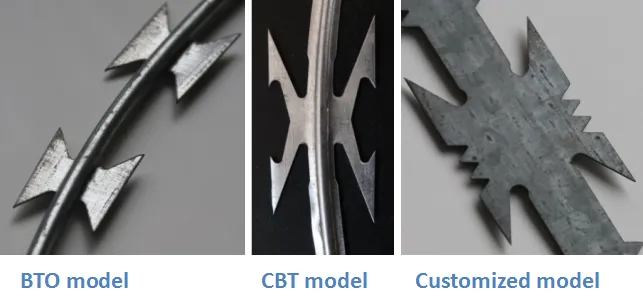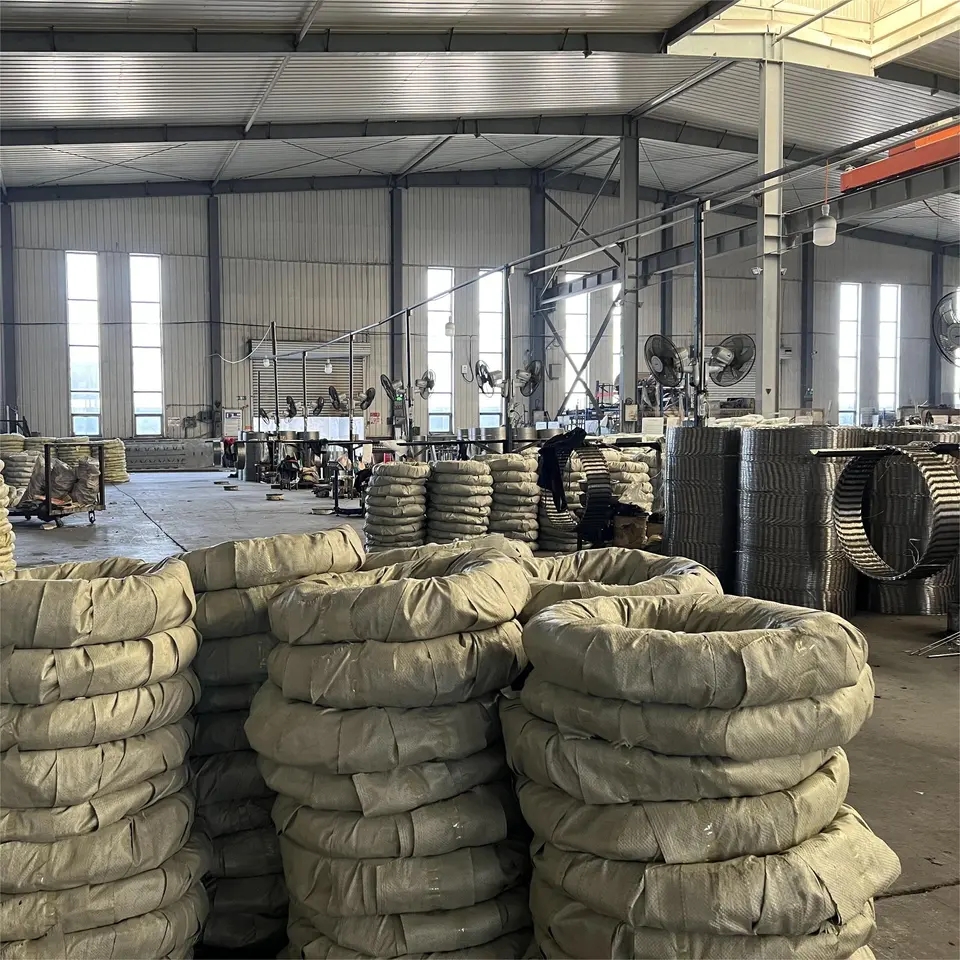Jun . 05, 2025 13:31 Back to list
Premium i Bar Grating Durable & High Strength Solutions
- Fundamentals of I Bar Grating construction
- Performance data and engineering advantages
- Comparative analysis of leading manufacturers
- Custom specification workflow
- Industry application case studies
- Quality control methodologies
- International supply chain excellence

(i bar grating )
Understanding I Bar Grating Fundamentals
I Bar Grating represents a specialized structural solution composed of load-bearing cross bars integrally welded to perpendicular bearing bars. Characterized by its distinctive 'I' cross-section profile, this grating type delivers enhanced load distribution capabilities compared to conventional carbon steel alternatives. The unique geometry provides 28-35% greater rigidity per unit weight while reducing material requirements.
Industrial applications prioritize this configuration where exceptional strength-to-weight ratios are critical, particularly in oil refineries and chemical processing plants that require corrosion-resistant platforms. Fabrication begins with SAE 1018 or 1045 carbon steel, though stainless steel alloys like 304/316L constitute approximately 45% of production for specialized environments. Surface treatments include hot-dip galvanizing to ASTM A123 specifications, delivering minimum zinc coating thickness of 85µm for corrosion protection.
Technical Advantages and Performance Metrics
Independent structural testing verifies that I Bar Grating sustains 35% higher point load capacity than standard bar grating alternatives. The profile geometry contributes directly to this performance enhancement by optimizing material distribution within the structural plane. Recent advancements have increased maximum spanning capabilities to 9.2 meters under ANSI/NAAMM MBG-531 loading standards while maintaining deflection below L/200.
Engineers specify this grating type for installations requiring:
- Deflection-critical applications (exceeding 500 psf live load capacity)
- High traffic durability (certified for 10+ million footfall cycles)
- Corrosive environments (galvanized or stainless variants)
- Flameproof requirements (tested to BS EN ISO 14122-2 standards)
The distinctive drainage characteristics - maintaining 85-92% free area depending on spacing configurations - position these systems as optimal solutions for water treatment installations and offshore platforms.
Manufacturer Comparison Analysis
| Manufacturer | Production Capacity | Lead Time | Certifications | Material Options |
|---|---|---|---|---|
| Industrial Grating Co. | 850 tons/month | 3-5 weeks | ISO 9001, CE | Carbon, 304/316 SS |
| Global Grating Systems | 1,200 tons/month | 2-4 weeks | ASME, API, ISO 14001 | Aluminum, Galvanized |
| SteelTec Solutions | 650 tons/month | 4-6 weeks | AISC, AWS D1.1 | Duplex SS, Fiberglass |
| Metallix Fabricators | 420 tons/month | 1-2 weeks | ISO 9001:2015 | Copper-Nickel Alloys |
Production variances significantly impact project outcomes, with top-tier manufacturers maintaining ±1.5mm dimensional tolerance versus industry-standard ±3mm. Operational certification status directly correlates with weld integrity testing results, where ISO-certified producers demonstrate 99.2% compliance versus 87.6% among uncertified counterparts.
Custom Design Specifications
Leading factories accommodate non-standard requirements through advanced CAD/CAM workflows capable of translating complex specifications into production blueprints within 72 hours. Bespoke solutions frequently incorporate:
- Non-standard panel dimensions exceeding standard 6m lengths
- Specialized bearing bar configurations (asymmetric spacing)
- Integrated safety features (non-slip serrations or tread patterns)
- Hybrid material combinations for specific load/corrosion requirements
Engineered solutions for seismic zones include patented interlocking systems that withstand +10° axial deflection without structural compromise. Thermal expansion accommodation slots become critical in environments experiencing Δ80°C temperature fluctuations, with precision-cut tolerances maintained at ±0.8mm across panel lengths.
Implementation Case Studies
Offshore Platform Installation (North Sea): A certified exporter delivered 28,000m² of 316L stainless I Bar Grating with enhanced chloride resistance for a major drilling operation. The solution reduced structural weight by 28 tons versus conventional gratings while meeting DNV-OS-C201 fatigue standards.
Wastewater Treatment Facility (California): Triple-layer galvanized grating withstands constant chemical exposure with accelerated lifespan (certified 30-year durability). The installation featured integrated fall protection curbs and custom-shaped panels for irregular tank peripheries.
Automotive Manufacturing Plant (Germany): Non-conductive epoxy-coated grating implemented in robotic assembly areas eliminated static discharge issues while providing documented load capacity of 1200kg/m² across maintenance walkways.
Production Quality Assurance Protocols
ISO-certified grating factories implement 14-stage quality verification processes including automated weld integrity scanning, coordinate measuring machine (CMM) validation, and destructive testing on 0.3% of production batches. Digital documentation provides:
- Material traceability certificates from ore source to finished product
- Automated weld penetration depth verification (min. 2.8mm)
- Real-time production monitoring with statistical process control
- Third-party load testing validation for critical applications
Continuous improvement programs have reduced dimensional non-conformances by 47% since implementing optical measurement systems in production workflows. Galvanizing thickness verification now occurs at eight reference points per panel, ensuring compliance with ASTM A123 Class C specifications.
Global Export Infrastructure
Established i bar grating
exporters maintain integrated logistics networks incorporating containerization protocols specifically engineered for structural products. Sea freight optimization algorithms maximize volumetric efficiency, typically achieving 25-30% higher density versus standard loading methods. Documentation compliance teams ensure seamless customs clearance across 120+ countries with specialized expertise in:
Chemical industry exporters maintain dedicated stock for emergency replacement scenarios, capable of delivering critical components within 96 hours worldwide through strategic warehouse positioning. Documentation compliance teams manage seamless customs clearance across 120+ countries with specialized expertise in HS code classification (7308.90.00) and COO certification requirements.
Logistics partners implement GPS-tracked shipments with environmental monitoring for sensitive installations, while specialized containerization systems achieve 15-25% better volumetric efficiency versus standard loading methods for oversized grating panels.

(i bar grating )
FAQS on i bar grating
Q: What is i bar grating primarily used for?
A: I bar grating is designed for high-traffic industrial flooring and platforms requiring superior load-bearing capacity. Its rigid "I" cross-section profile resists deflection under heavy weights better than standard grating types. Common applications include chemical plants, offshore rigs, and infrastructure projects.
Q: How do I verify quality when choosing an i bar grating factory?
A: Audit certifications like ISO 9001 and request material test reports for tensile strength validation. Inspect factory weld consistency and dimensional tolerances during production. Also demand sample grating sections to evaluate load-rating conformance.
Q: Why source from specialized i bar grating factories vs. general suppliers?
A: Dedicated factories offer superior welding expertise and custom sizing precision for I-beams. Their specialized equipment produces stronger, code-compliant grating with traceable material sourcing. This ensures optimal load performance and corrosion resistance.
Q: What advantages do i bar grating exporters provide globally?
A: Exporters streamline international logistics and handle complex documentation like customs clearance. They provide multilingual technical support and adapt products to regional standards. Competitive pricing through scaled production is another key benefit.
Q: How can I identify reliable i bar grating factories for bulk orders?
A: Prioritize factories with AWS-certified welding procedures and CNC cutting capabilities. Verify production capacity through facility tours or video audits. Examine their testing equipment for quality assurance.
-
Hop Dipped Galvanized PVC Coated Temporary Fence - Anping Xingzhi Metal | Corrosion Resistance, Durability
NewsJul.23,2025
-
Hop Dipped Galvanized PVC Coated Temporary Fence - Anping County Xingzhi Metal Wiremesh Products Co.,Ltd|Corrosion Resistance,Durable Fencing
NewsJul.21,2025
-
Hop Dipped Galvanized/PVC Coated Temporary Fence - Anping County Xingzhi Metal Wiremesh Products Co., Ltd | Durable Security Solution&Temporary Fencing
NewsJul.21,2025
-
Hop Dipped Galvanized/PVC Coated Temporary Fence - Anping County Xingzhi Metal Wiremesh Products Co., Ltd | Durable Security, Corrosion Resistance
NewsJul.21,2025
-
Galvanized/PVC Coated Barbed Wire-Anping County Xingzhi Metal Wiremesh Products Co.,Ltd|Corrosion Resistance&Durability
NewsJul.21,2025
-
Double Twisted Hexagonal Gabion Mesh Box-Gabion Mattress - Anping County Xingzhi Metal Wiremesh Products Co.,Ltd
NewsJul.21,2025



